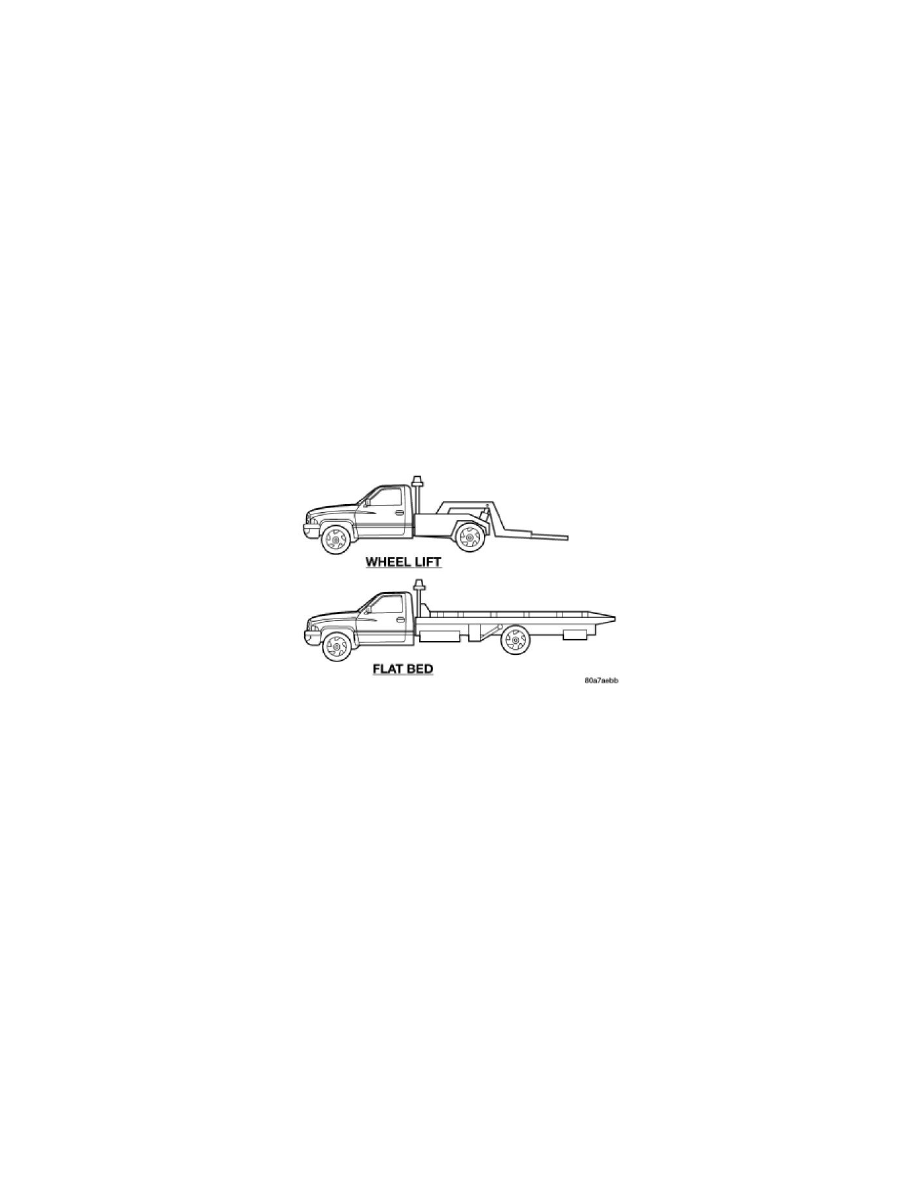Dakota 4WD V8-4.7L Flex Fuel (2008)

Towing Information: Service and Repair
Towing Recommendations
TOWING RECOMMENDATIONS
A vehicle equipped with SAE approved wheel lift-type towing equipment can be used to tow all vehicles. When towing a 4WD vehicle using a wheel-lift
towing device, use tow dollies under the opposite end of the vehicle. A vehicle with flatbed device can also be used to transport a disabled vehicle.
Four-Wheel Drive Vehicles
The manufacturer recommends towing with all wheels OFF the ground. Acceptable methods are to tow the vehicle on a flatbed or with one end of the
vehicle raised and the opposite end on a towing dolly.
Two-Wheel Drive Vehicles
Provided that the transmission is operable, tow with the transmission in Neutral and the ignition key in the OFF position along with the front wheels
raised and the rear wheels on the ground. The speed must not exceed 30 mph (50 km/h) and the distance must not exceed 15 miles (25 km).
If the vehicle is to be towed more than 15 miles (25 km ), it must be towed on a flatbed, or with the rear wheels raised and the front wheels on the
ground, or with the front end raised and the rear wheels on a towing dolly.
NOTE: Towing the vehicle at more than 30 mph (50 km/h) or for more than 15 miles (25 km ) can cause severe transmission damage.
SAFETY PRECAUTIONS
CAUTION: The following safety precautions must be observed when towing a vehicle:
-
Secure loose and protruding parts.
-
Always use a safety chain system that is independent of the lifting and towing equipment.
-
Do not allow towing equipment to contact the disabled vehicle's fuel tank.
-
Do not allow anyone under the disabled vehicle while it is lifted by the towing device.
-
Do not allow passengers to ride in a vehicle being towed.
-
Always observe state and local laws regarding towing regulations.
-
Do not tow a vehicle in a manner that could jeopardize the safety of the operator, pedestrians or other motorists.
-
Do not attach tow chains, T-hooks, or J-hooks to a bumper, steering linkage, drive shafts or a non-reinforced frame hole.
-
Do not tow a heavily loaded vehicle. Use a flatbed device to transport a loaded vehicle.
GROUND CLEARANCE
CAUTION: If vehicle is towed with wheels removed, install lug nuts to retain brake drums or rotors.
A towed vehicle should be raised until lifted wheels are a minimum 100 mm (4 in) from the ground. Be sure there is adequate ground clearance at the
opposite end of the vehicle, especially when towing over rough terrain or steep rises in the road.
RAMP ANGLE
If a vehicle with flatbed towing equipment is used, the approach ramp angle should not exceed 15 degrees.
TOWING WHEN KEYS ARE NOT AVAILABLE
When the vehicle is locked and keys are not available, use a flat bed hauler. A wheel-lift device can be used on 4WD vehicles provided all the wheels
are lifted off the ground using tow dollies.
